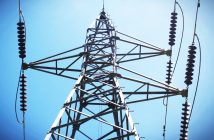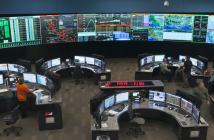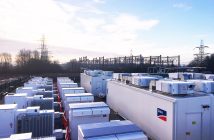- Do wind turbines and solar farms hold the keys to saving the environment?
- Michael Shellenberger, founder of Environmental Progress and noted climate activist, used to think so.
- Now he’s not so sure.
- He explains why in this video.
Opinion
Environmentalists ready to slam unreliable wind and solar are few and far between. Michael Shellenberger is one of them.
Shellenberger, a long-time advocate for reliable, affordable and safe nuclear energy, and critic of intermittent renewables – calling wind and solar worse than useless. Does Michael combine common sense, logic and reason, in an era when those attributes have become scarce commodities?
As aging wind turbines across the globe near the end of their useful lives, the sector is grappling with recycling solutions to avoid filling landfills with the remains of obsolete blades.
While steel from the towers and nacelles is recyclable, turbine blades are filled with a composite material that cannot be easily broken down. According to industry group WindEurope, about 14,000 blades will be decommissioned across Europe by 2023.
What do you think?
Author: Bryan Groenendaal











6 Comments
Can t we shorten the blades for reuse in the domestic market for smaller generation plants?
German Sustainables vertical axis wind turbines are 95% recyclable
http://www.german-Sustainables.com
For more information camerongroupinternational.co.uk
All PPA should make provision for proper recycling of renewable resources post contractual period or useful lifecycle.
Engineers need to specify from “Cradle to Grave” or “Sperm to Worm” to ensure all costs are covered.
Off-course this will add extra cost to these projects.
Maybe these technologies will then not be as feasible anymore…
First of all why do the decommissioning the blades of wind mill is not clear. It can last for centuries. I assume it’s based on the predicted life a blades during manufacturing process. This is not true as they had to put a number they put 25 years. It shouldn’t be decommissioned based on this data. Similarly in the case of solar panels, I recently bought solar panels that are 20 years old. It’s just that it produces only 65% of its original capacity. Actually there is no need to waste them once installed. Again all the materials used I. The manufacturing of panels is recyclable. Glass aluminium and silicon. Lead etc is not a threat at the minute quantity that’s used in them. Compared to this batteries are more of threat. I find the findings here are unfounded. What’s needed is law on how to dispose them by recycling.
Can the unusable turbines be repurposed and used as materials for building. It seems they can make for good use as louvers or even innovative housing designs for the unfortunate. With “pro-bono” or affordable re-engineering of the material, one can suggest that be a use.